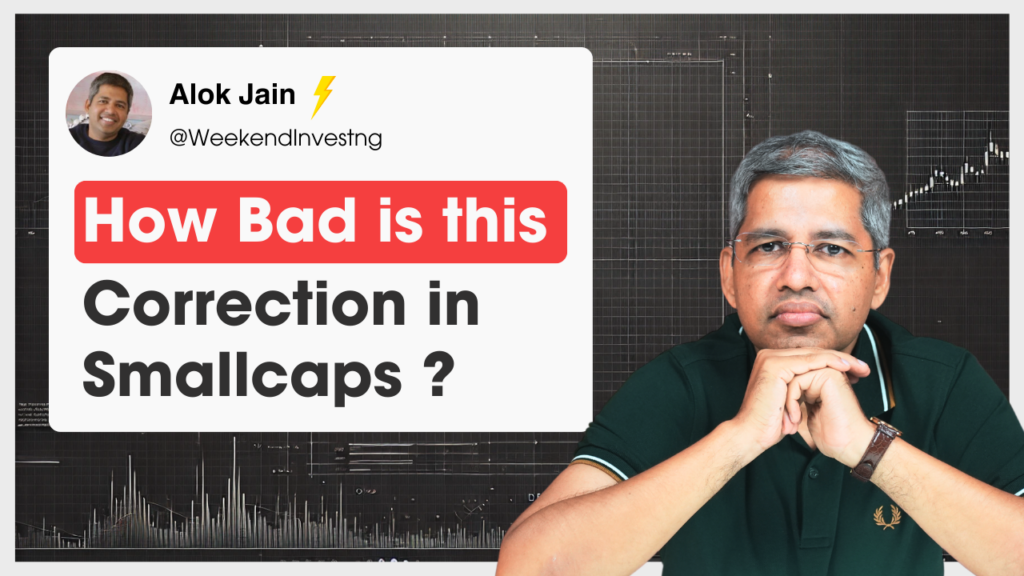
There’s good news for the markets today—finally, the Nifty50 ends its eight-day consecutive losing streak and registers a green day. We’ve been discussing a lot of factors contributing to the overall pessimism surrounding Indian markets, such as concerns around trade progress, the strength of the US dollar, foreign investors pulling money out of the market, and the attractiveness of the S&P 500, which has recently registered an all-time high on a weekly close basis. There are many reasons for the recent market conditions, but today we won’t focus on that. We’ll focus on the correction happening in the small-cap space.
Small-cap stocks have been a hot topic, especially during a correction. A lot of chatter surrounds the small-cap index, and today we will try to analyze how bad this current fall is compared to historical corrections. We will rank this fall against past falls across multiple time frames.
Where is the market headed?
Market Overview
The Nifty50 has found support around 22,800, and every time this level has been tested, there has been some support. We’re back around this level again, with the Nifty50 standing at 29:59. If you take a look, the 40-day moving average shows that Nifty50 has consistently faced resistance each time there’s been an attempt to break past this mark. You can clearly see the eight consecutive sessions of negative performance for Nifty, but today we’ve managed to break that losing streak. Hopefully, this marks the start of a consolidation phase or possibly a recovery, though it’s too early to call.
As momentum investors, our job is to follow the market’s direction rather than try to predict where it will go.
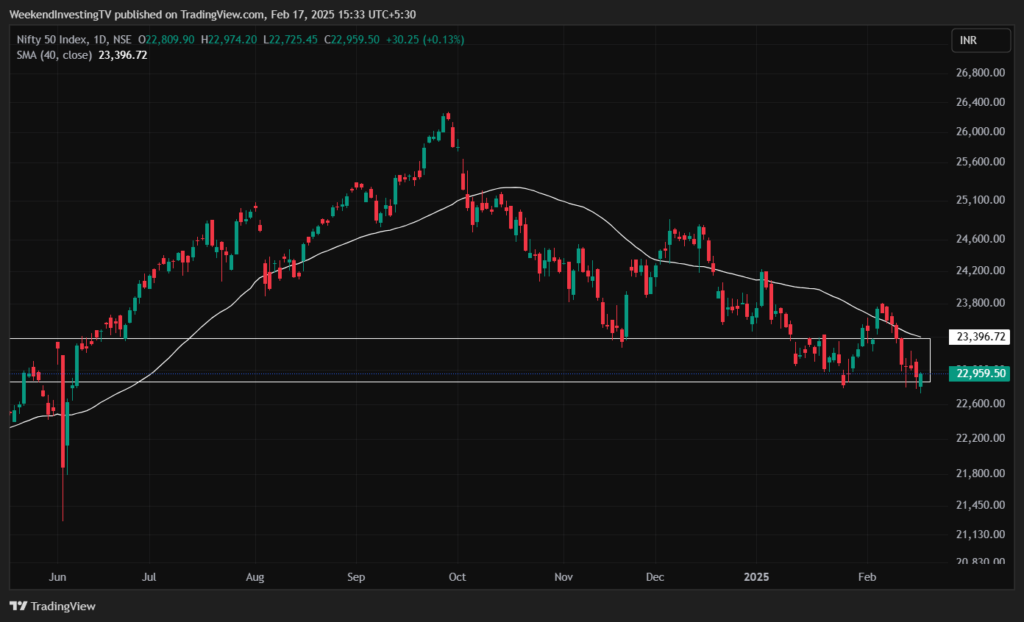
Nifty Next 50
The Nifty Junior is down by about 0.19%, forming a hammer-shaped candle and finding support around 59,446.
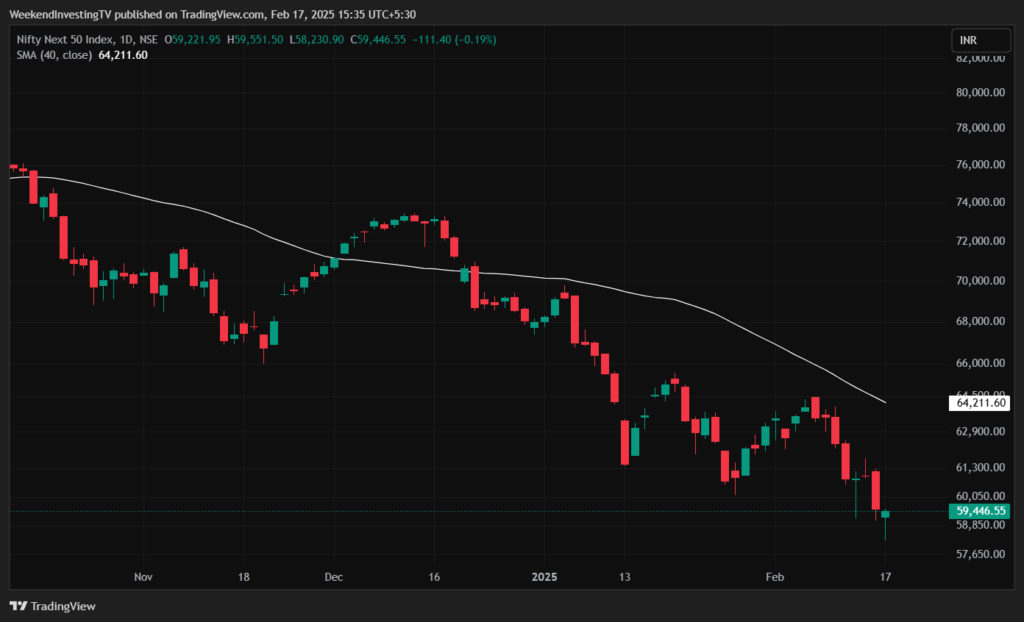
Nifty Mid and Small Cap
The Mid Cap index is up 0.34%, showing a reasonable uptick but still far from breaking its trend of lower highs and lower lows. A similar trend is seen in the Small Cap index, which we’ll focus on today. Currently, the Small Cap index is at about 14,468, and whether it will continue to offer support or follow the pattern of lower highs and lower lows is something that only time can reveal.
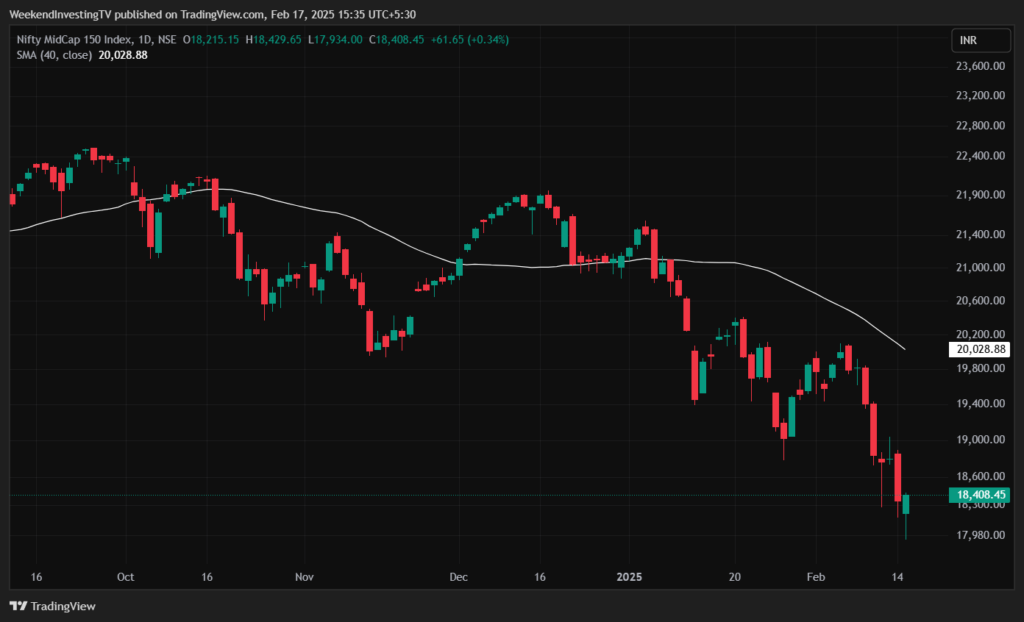
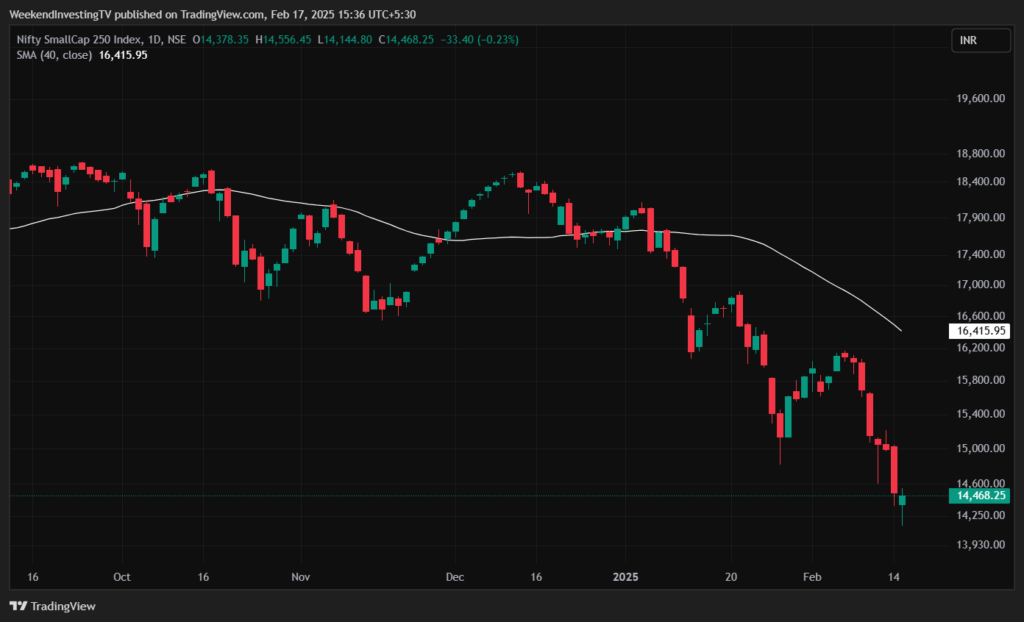
Nifty Bank Overview
Bank Nifty has actually been the best performer relative to other indices. Private banks have outperformed public sector banks recently, with a gain of about 0.32%.
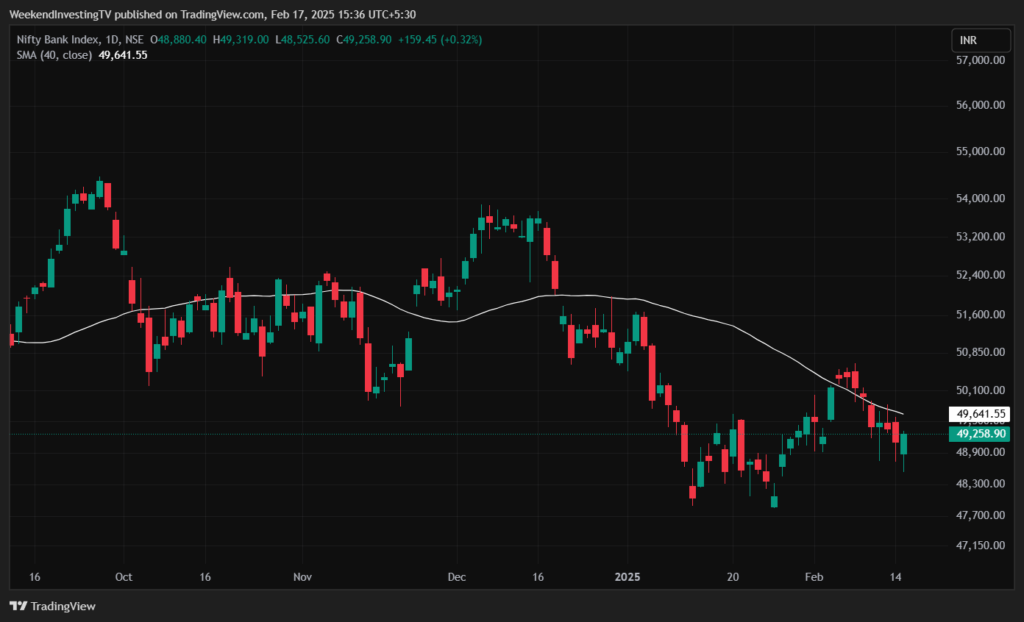
GOLD
Gold, as expected, has been doing well, especially during times of market apprehension. Historically, when markets show signs of pessimism, gold tends to rise, and it has moved from 7,410 to around 8,700, consolidating around the 8,500 mark. Gold continues to prove itself as a safe-haven asset during uncertain times.
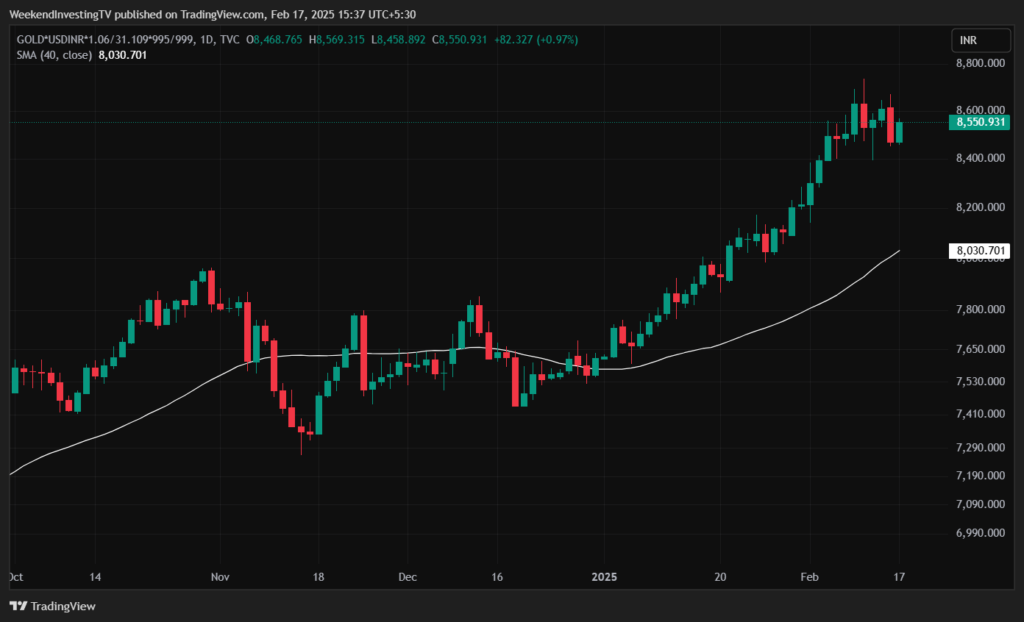
Advanced Declined Ratio Trends
Let’s look at market breadth. It’s more evenly spread out. The Nifty 500 shows 236 advances versus 262 declines. Nifty50, however, has been one of the best-performing indices, with 35 advances compared to just 15 declines.
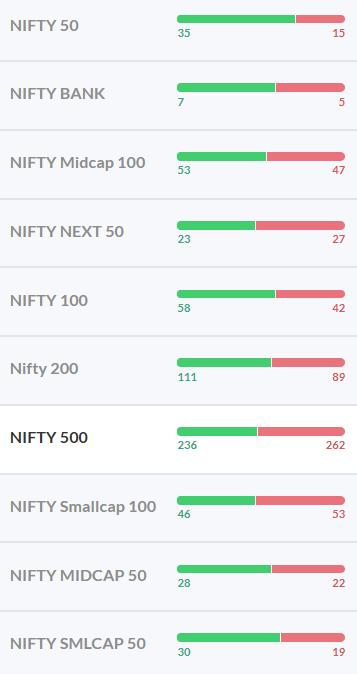
Nifty Heatmap
The heatmaps look positive, with several pockets performing really well, including stocks like HDFC Bank, SBI, Bajaj Finserve, Sriram Finance, IndusInd Bank, Coal India, Ultratech, and Civit. However, there’s some weakness in stocks like Infosys, TCS, and Wipro, which have registered losses of about a quarter percent, and companies like Bharti Airtel and M&M, which are down by more than 2%.
In the Nifty Junior, Pharma stocks have done well in the Nifty Next 50 index, with companies like Divislab, Torrent Pharma, Zydus Life showing very healthy gains. However, there is also visible weakness in some other sectors, with Siemens losing 2.6%, and stocks like ICICI Prudential Life Insurance, REC Ltd., Varun Beverages, and Godrej losing over 1.5%.
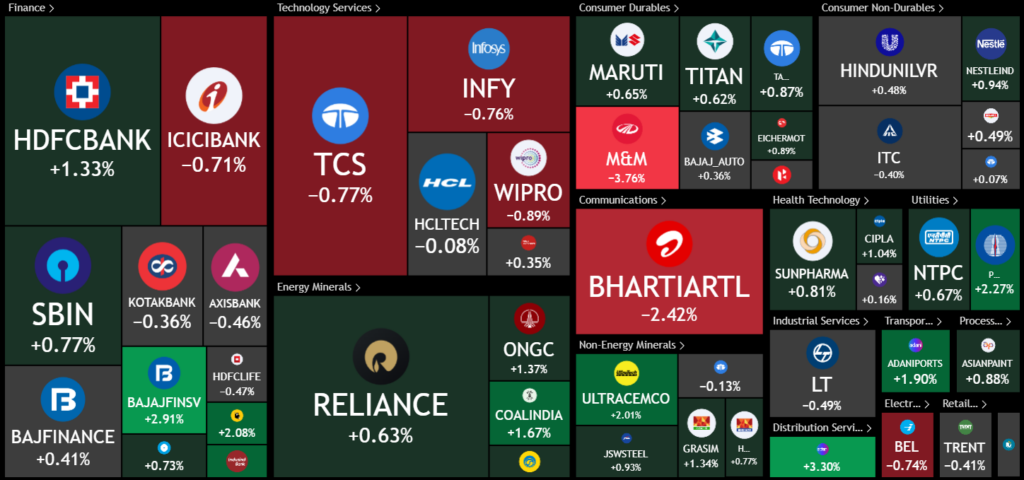
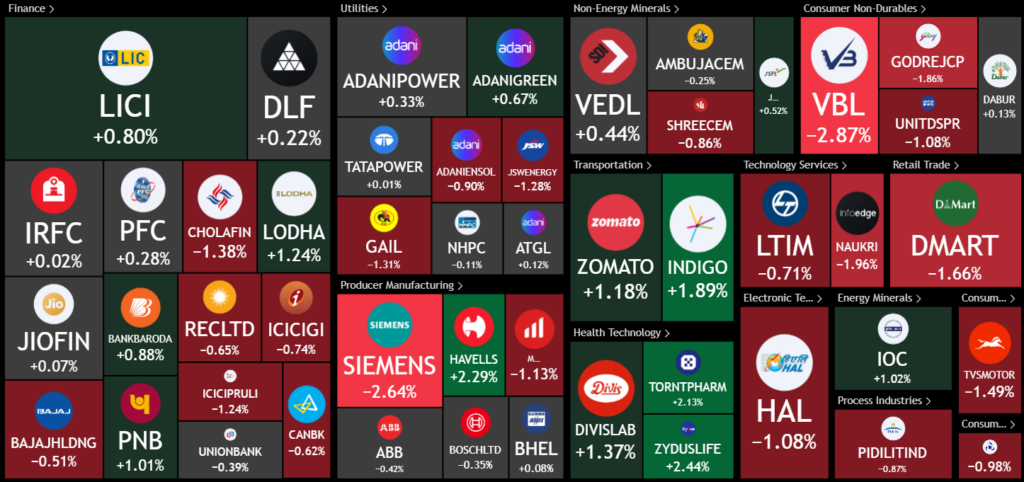
Sectoral Overview
Shifting focus to sectoral trends, the defense sector stands out as a case study. This is a sector we’ve been discussing for a while, and we might cover it more extensively in a future episode. The defense sector has been hammered across almost all time frames—down 2.8% today, 10% in the past week, 17% over the past month, and 26% over the past six months. This serves as a reminder that, despite strong past performances, one can’t assume that any sector will continue to do well indefinitely. It’s crucial to have a clear strategy and remain nimble, adapting to changing market dynamics.
Over the past year, only a handful of sectors have been in the green, with the capital market space performing particularly well at 28%. Defense, though positive at 23%, has been severely beaten down in recent months. When looking at the six-month performance, no sector has posted positive returns except the capital markets.
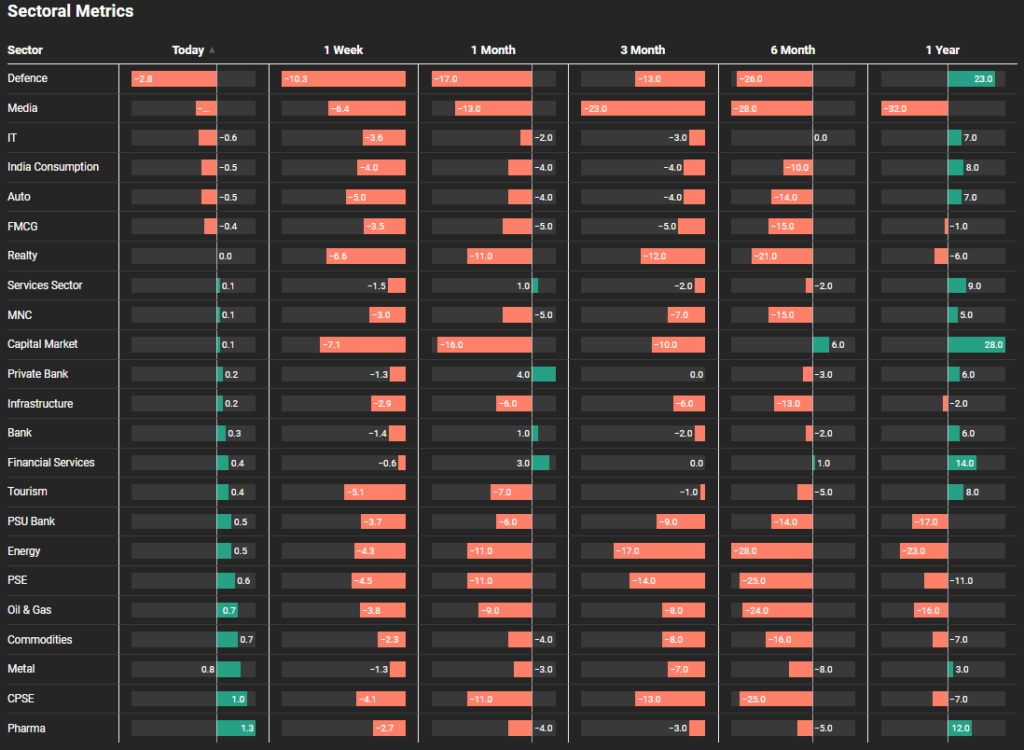
Sectors of the Day
Nifty Pharma Index
The Pharma sector has been performing relatively better than others and has featured in many of our Daily Byte episodes. Stocks like Janta Pharma, Glenmark, Robindo, Alkem, and Lupin have contributed to a 1.27% gain in the Pharma index today.
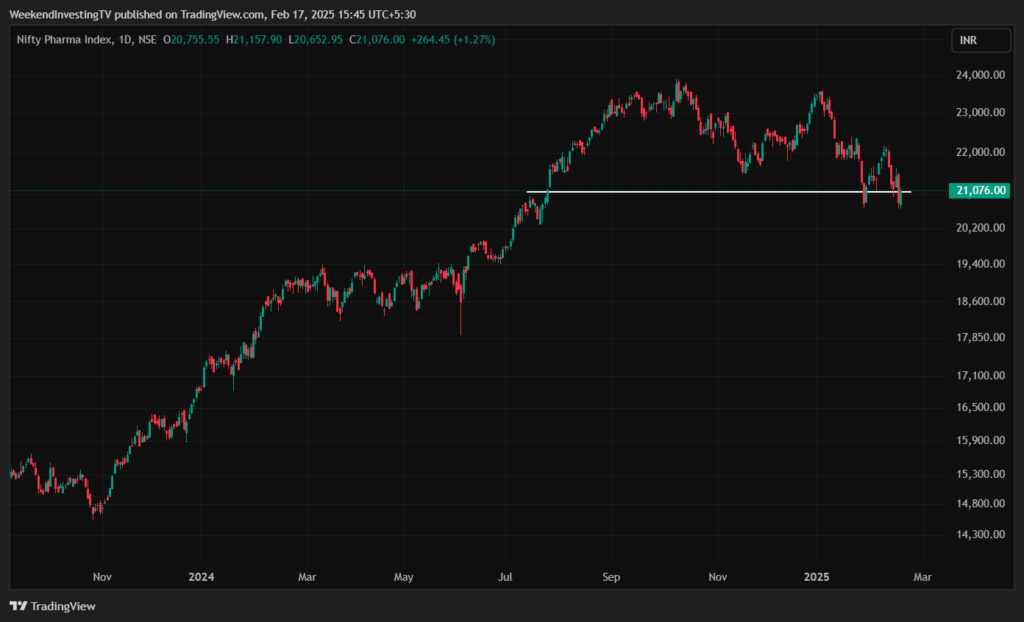
Story of the Day : How bad is the correction in small caps?
Small-cap stocks are a hot topic whenever the market moves up, with discussions around the best small-cap funds, small-cap multibagger stocks, and more. It’s driven by human greed—we want quick returns and big portfolio gains, not steady long-term growth. As a result, a lot of money flows into small caps when there’s traction and buzz, leading to significant corrections.
The Small Cap 100 index is the focus of today’s study, as the Small Cap 250 doesn’t have enough data. The Small Cap 100 index is currently down by 22% from its all-time high of 19,800. After reaching a “death cross” in early February, the index has dropped nearly 9-10% in the first half of February, following a 10% drop in January. In total, this marks a 22% correction. However, today’s episode will focus on how this fall ranks historically.
We’re analyzing how this current correction compares to previous one-month, three-month, and six-month returns. Looking at historical data from January 2004 onwards, we’ve had 253 months, and we’ve ranked them from the worst to best. The worst performance occurred in October 2008, with a massive 37% fall in the Small Cap 100 index. But interestingly, after such a sharp drop, the six-month return was positive, showing that the market doesn’t remain in a correction phase indefinitely. The one-year return after that phase was an exceptional 76%. Similarly, the Covid-related drop in March 2020 was followed by rapid recovery and significant gains in the months that followed.
As for the current correction, February 2025 ranks as the 21st worst monthly performance out of 253 months, with a 10% drop so far. Historically, months with similar losses have been followed by healthy recoveries. On average, after a correction of this magnitude, the market shows a 24% gain over the next year and 11% over the next six months. The message here is clear: corrections are part of market cycles, and patient investors typically see positive outcomes after such phases.
We’ve also looked at three-month, six-month, and one-year data. For example, after a 18.8% correction in the three-month period, the average return over the next six months has been 27%. A similar pattern is observed for six-month and one-year periods after corrections of this magnitude, with average returns of 48% and 61%, respectively, over the following two years.
The key takeaway is that market corrections are temporary, and with patience, positive returns typically follow. This is a crucial point for investors to understand—while markets may move in cycles of two steps forward and one step backward, those who stay the course often reap the rewards in the long run.
Markets are not designed to ensure that every investor becomes rich, but they reward those who are patient, learn from their mistakes, and stick with a long-term strategy. So, stay invested, continue your SIPs, and don’t pull out during a correction. We’ve seen that historically, markets have always recovered after downturns, and this time will likely be no different.
WeekendInvesting launches – PortfolioMomentum Report
Disclaimers and disclosures : https://tinyurl.com/2763eyaz





